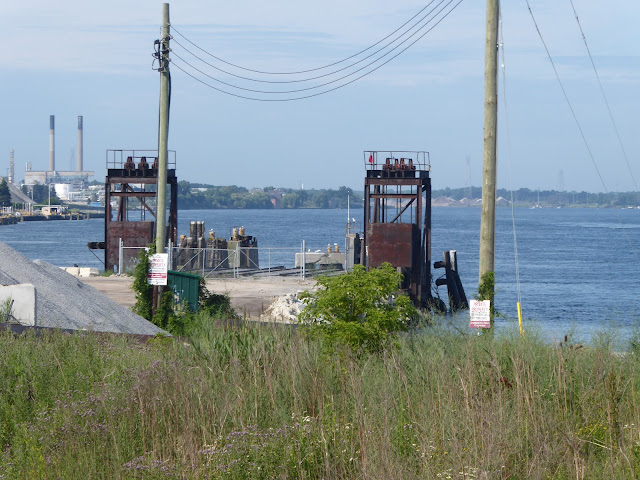I spent a wonderful few days with my family in Southwestern Ontario for the Canada Day weekend. It was fun to be in my hometown for Canada Day for the first time in decades. While there, I was able to amass countless photos from the local railway operations. My challenge now is how to organize it all thematically so it makes sense in the context of this blog.
First, a bit of news passed along from a reader (thanks Michael F.). The City of Ottawa is planning to widen Carling Avenue and do away with a railway bridge over the road in the west end of the city. This old bridge carried transcontinental freight and passenger trains through Ottawa for generations, but the Beachburg Subdivision was torn up past Nepean Junction years ago, making this bridge a relic of the past. It will now go so that the one narrow stretch of Carling can be alleviated.
This is a photo I took from the passenger seat of my car three years ago. It always pays to take photos of the mundane, because you don't know when the mundane might become something worth remembering. I will be glad to see this stretch of Carling widened because the narrow fit beneath the rail bridge is dangerous and the rails are long gone, so it's time to do the practical thing. The city doesn't mention on its site whether there will be any bridge over Carling once the road is widened. I would imagine the old rail right-of-way would make a nice bike and pedestrian trail.
Isn't it interesting that, at a time when yet more of Ottawa's rail infrastructure is being removed, there are open musings from our federal government of building new railway infrastructure as part of the government's drive to devote two percent of the country's GDP on defense spending. Given how much of our area rail network has been removed, it would seem remote that there would be any strategic new rail infrastructure built here. However, those who have lived here for a while know that military vehicles and equipment were once delivered to CFB Petawawa via rail. I dare say this wasn't a huge source of revenue or regular thing for CP, CN or Ottawa Central, but there was a time when rail served our defense industry in the area. Check out this post from Trackside Treasure for more information about this piece of railway history.
Also, here's a YouTube video of Ottawa Central making a military delivery to Petawawa.
Before I get to my treasure trove of rail images from the Sarnia area, I'd like to share a few attempts at rail photography on the 401/407 and the other major highways between Ottawa and my hometown. I did see two freight trains going through Kingston, but neither could be photographed from my vantage point in the passenger seat.
Then there was the stretch of the 407 near CN's MacMillan Yard. This is wide highway and the safety barriers make a shot of the yard challenging to say the least, but with a little bit of cropping and luck, you can at least get a glimpse of this huge operation.
This image might look a bit strange. Why so much sky and so little actual railways? Well, that's because I had to crop out the highway safety barrier from the shot. You can at least get a small glimpse of a former CitiRail lease unit making its way toward the 407 while a string of autoracks to the right await their next destination. There are also some boxcars next to the CN building to the left of the shot. I wish I could offer something a bit more detailed, but I like scanning through this shot for all the various interesting elements.
Also, I did catch a passing container train making its way over the highway near Airport Road.
Given how quick CN is to tear up every last scrap of track here in Ottawa, I was surprised to see rails still there at the end of the old ferry dock, some 30 years after the new tunnel was put into use beneath the river, making the ferry operation obsolete.
Okay, so it's not the type of meet we usually like to see in a railway blog, but I thought it was cool to catch two Great Lakes freighters making their way north and south along the river. The southbound ship is the Mark W. Barker, an American ship owned by the Interlakes Steamship Company. This ship carries taconite, salt and limestone, although it has carried parts of wide turbines in the past. I was not able to get a clean enough shot to read the name of the northbound ship.














